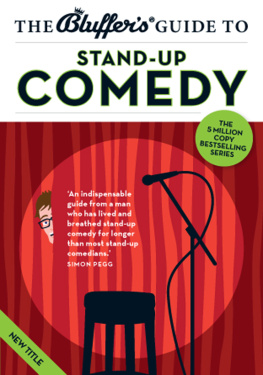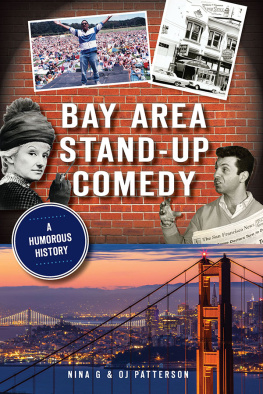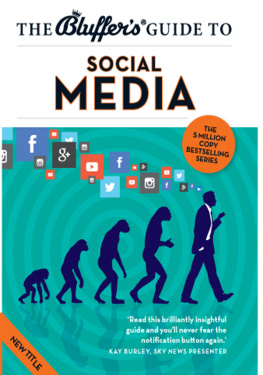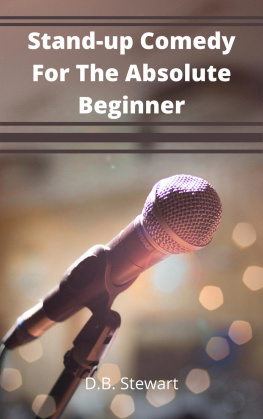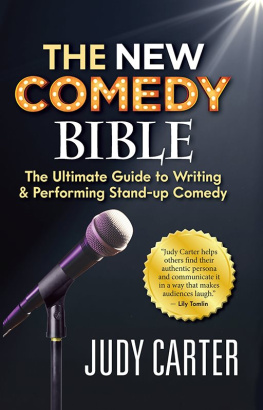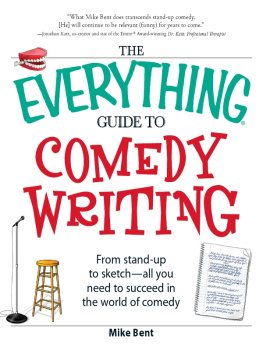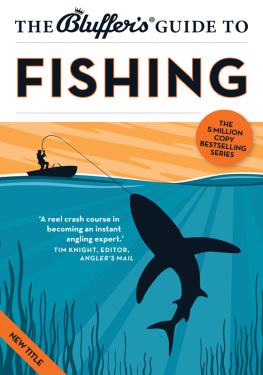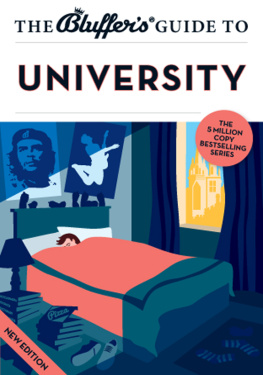

Hammersley House
5-8 Warwick Street
London W1B 5LX
United Kingdom
Email:
Website: bluffers.com
Twitter:
Published 2014
Copyright Bluffers 2014
Publisher: Thomas Drewry
Publishing Director: Brooke McDonald
Series Editor: David Allsop
Design and Illustration: Jim Shannon
All rights reserved. No part of this publication may be reproduced, stored in a retrieval system or transmitted in any form or by any means, electronic, mechanical, photocopying, recording or otherwise, without the prior permission of Bluffers.
A CIP Catalogue record for this book is available from the British Library.
Bluffers Guide, Bluffers and Bluff Your Way are registered trademarks.
| ISBN: | 978-1-909937-24-6 (print)
978-1-909937-25-3 (ePub)
978-1-909937-26-0 |

In 2008 researchers concluded that the oldest joke they had found dated from 2000 BC and was a proverb told by the smutty Sumerians of southern Mesopotamia.

A CAVEMAN WALKS INTO A CAVE...
A veritable plethora of archaeologists and archivists have argued for years about the origins of stand-up comedy. Where did it start? What purpose did it serve? Why did it catch on? Some speculate that the ancient Greeks were the first people to stand on a stage and tell jokes. Others have suggested that, between conquering Europe and Asia Minor, the Romans entertained each other with pithy anecdotes about dissolute emperors making their horses consuls, why their roads had no corner shops, and how the queen of Egypt was such an enthusiastic fellatrix that she once pleasured 100 Roman soldiers in a single session.
Humour probably goes back to the dawn of civilisation. No sooner had one Neanderthal brought home a dead animal than he was standing around the fire saying something to the effect of Dont you just hate it when you go out to hunt a red deer and you get halfway into the forest and cant remember what you went there for? The others laughed so much that he returned the following week to tell the same story. A month later he had an agent negotiating a tour of nearby caves.
In 2008 researchers at the University of Wolverhampton (thats not an oxymoron) concluded that the oldest joke they had found dated from 2000 BC and was a proverb told by the smutty Sumerians of southern Mesopotamia: Something which has never occurred since time immemorial; a young woman did not fart in her husbands lap.
The oldest-known recorded English joke dates from Anglo-Saxon times and was found in the Codex Exoniensis, a tenth-century book of poetry held at Exeter Cathedral: What hangs at a mans thigh and wants to poke the hole that its often poked before? Answer: A key. Somewhere in a pub in South London, somebody is probably telling a similar joke as you read this. Innuendo has always been essential to successful stand-up comedy.
This guide will fill in the history of stand-up comedy and furnish you with all the essential facts you need to convince your friends that you know your comedy onions. It may not turn you into an arena-filling comedian, but it will reveal what it takes to be one, and simultaneously demonstrate that there is in fact much more to modern stand-up comedy than innuendo. By the end of the book you will be able to hold your own in any conversation about comedy, and therefore minimise the risk of being rumbled as a bluffer. But be careful not to hold your own in public or you may be arrested.
TURNING A TRICK
I n many respects stand-up comedy has hardly changed in the last thousand years. A man and, sorry, it has generally been a man, although that is now changing as you will later see attempts to make a group of people laugh with an infectious cocktail of wit, wisdom, and maybe some wordplay and charisma. He might even wear a funny hat and fall over. Some people will laugh at anything.
Money may well change hands at some stage usually at the start of the evening. It has been noted that there is an interesting similarity between stand-up comedy gigs and prostitution. In both cases the punter pays to have an emotional response in the company of someone they may not know personally and may never see again.
ROOTS AND RITES
Long before comedy became a part of show business, it was already part of our culture. Modern comedy has its roots in ancient pagan rites that some experts believe even predate Liverpudlian legend Ken Dodd telling his first gag about the Inland Revenue. It is remarkable how societies all over the world developed their own brand of humour which was both different and at the same time strikingly similar.
Native Americans, for example, believed in a comedic fertility character known as Kokopelli, a hunchbacked figure with a huge erection carrying a bag of seeds. Kokopelli would go around playing pranks on villagers, who would laugh so much that they would not notice him ravishing their women before moving on to another village the following night and doing the same thing. Maybe he was an ancestor of Russell Brand.
SEND IN THE CLOWNS
The clown has always had tacit permission to defy or simply ignore convention. In the Middle Ages jesters were able to speak their mind in the monarchs court. They were societys safety valve, a controlled way of expressing discontent. From Pueblo Indians mocking sacred ceremonies to a modern circus clown squirting water at the audience, comedy breaks down barriers. Stand-up Stewart Lee would start his 2005 show 90s Comedian by drawing a chalk circle on the stage to stand in. This, he explained, was what medieval clowns used to do outside churches to protect themselves from being persecuted for heresy.
By the 1800s a career in comedy was an established way of earning a living. The first great modern clown was Joseph Grimaldi, who was the Michael McIntyre of his day careful not to offend, adored by the public, envied by his rivals. In The Pantomime Life of Joseph Grimaldi, author Andrew McConnell Stott recalls how one contemporary tried to besmirch Grimaldis reputation for reliability by billing him in the line-up of a London show when he knew he was working in Birmingham. The clown got wind of the plot and after a breathless 100-mile, 19-hour journey by stagecoach made it onstage just in time.
Yet the strain of staying at the top took its toll, as it would do to many after him. Grimaldi suffered from depression and died in poverty and pain due to the damage caused to his body by his slapstick acrobatics. His legacy is the idea of the sad clown who makes everyone laugh but goes home alone and cries himself to sleep. One should adopt an air of gravitas when talking of Grimaldis fate, as a reminder that making people laugh is a serious business. Indeed, you might quote the great actor Edmund Kean who, on his deathbed, said: Dying is easy, comedy is hard. Perhaps you might conceal an onion about your person and wipe away a convenient tear at this juncture.
MUSIC HALLS AND VAUDEVILLE
But this is comedy, and the bluffer should not dwell on the more morbid aspects of the profession. In the Victorian era, comedians were superstars, packing out music halls. You should demonstrate your inside knowledge by referring to Little Tich by his real name, Harry Relph. Tich was only four feet six inches tall and had six fingers on each hand. He was famous for his big-foot dance in which he cavorted around in shoes that were two feet long. Tich would balance on them, strut around on them and even hide behind them. The bluffer must also mention Dan Leno, a man who entertained Queen Victoria in her dotage and was given a diamond tiepin by King Edward and nicknamed the Kings Jester.
Next page
